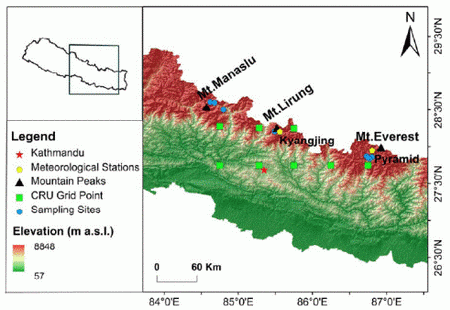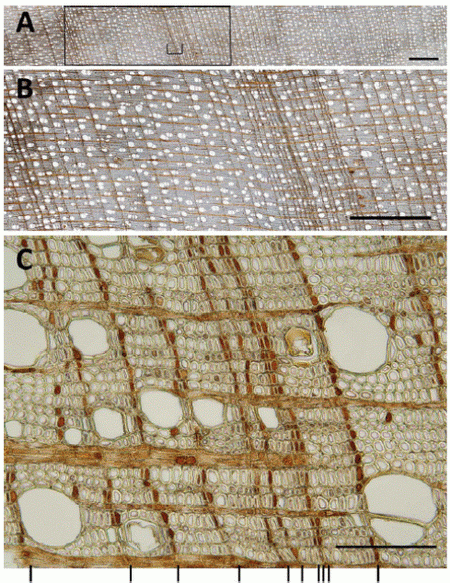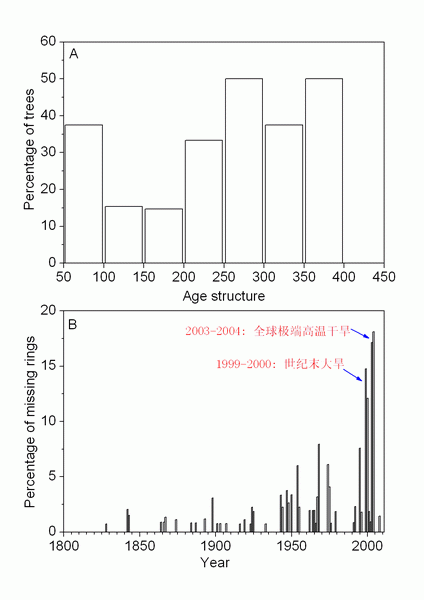Birch (Betula) trees and forests are widely distributed across much of the temperate and boreal zones of the Northern Hemisphere. Yet, despite being an ecologically significant genus, it is not well studied compared to other genera like Pinus, Picea, Larix, Juniperus, Quercus, or Fagus. Prof. LIANG Eryuan and his colleagues made use of the widespread Himalayan birch (Betula utilis) in the southern Himalayas, and studied the controlling factors over its growth.
“As precipitation in the Nepalese Himalayas decreases with increasing elevation, we hypothesized that the growth of birch at the upper timberlines between 3,900 and 4,150 m a.s.l. is primarily limited by moisture availability rather than by low temperature.” Said Prof. Liang regarding the working hypothesis. To verify the hypothesis, Prof. Liang and his PhD candidate Binod Dawadi, facilitated by the TEL and TPE Kathmandu Center, have conducted a wide range of survey along the southern Himalayas to take tree rings from a total of 292 increment cores from 211 birch trees at nine timberline sites for dendro-ecological analysis.

Tree ring patterns showed the synchronous occurrence of narrow rings and the high interseries correlations within and among sites, which evidenced a reliable cross-dating and a common climatic signal in the tree-ring width variations. Their study found a stronger control of precipitation during spring (March-May), when all nine tree-ring width site chronologies showed a strong positive response to total precipitation, rather than temperature.

They also compared the tree ring patterns with the instrumental meteorological record (from 1960 to the present), and found that years with a high percentage of locally missing rings coincided with dry and warm pre-monsoon seasons. Besides, periods of below-average growth in birch were in phase with well-known drought events all over monsoon Asia. Both evidences thus pointed to a new understanding that Himalayan birch growth at the upper timberlines is persistently limited by moisture availability.

Their study was recently accepted by the Ecological Society of America for publication in Ecology(http://dx.doi.org/10.1890/13-1904.1).


